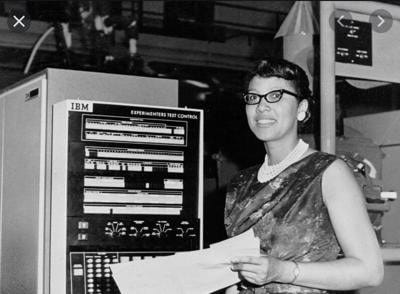Why Smart People Get Replaced by Machines (And One Woman Who Didn't)
Dorothy Vaughan saw the future coming and trained herself to lead it.
In 1958, NASA installed their first electronic computers at Langley Research Center.
Within months, dozens of human "computers" - the mathematicians who calculated rocket trajectories by hand - were laid off. Careers that took years to build vanished overnight.
But Dorothy Vaughan saw it coming.
While her colleagues worried about job security, Vaughan was already teaching herself FORTRAN programming at night. Not because management asked her to. Because she understood something most experts miss when technology threatens their domain:
The people who survive change aren't the ones who fight it.
They're the ones who see the pattern first.
The Cycle That Kills Most Experts
Here's what happens to 95% of professionals when new technology arrives:
They spend months proving why the old way is better. They list all the reasons human judgment beats machine processing. They lobby management to resist the change.
Meanwhile, early adopters are already learning the new tools.
By the time the resisters realize they're wrong, the adopters have 18 months of experience. Game over.
Dorothy Vaughan watched this exact cycle destroy careers around her. But she did something different.
How Vaughan Avoided the Expert Death Spiral
Dorothy Vaughan ran NASA's West Area Computing unit, a segregated group of African American women mathematicians who manually calculated flight paths for early space missions. When electronic computers arrived in 1958, most expected these "human computers" to become obsolete.
Instead, Vaughan's team became the backbone of NASA's digital transformation.
Her approach:
She studied the threat like an engineer.
While others panicked, Vaughan analyzed what the machines actually did. They processed data faster but still needed human programming, debugging, and interpretation. The threat wasn't computers - it was staying manual.
She acquired skills before they were required.
Vaughan taught herself FORTRAN months before NASA offered training. She studied manuals at night, experimented during breaks, debugged code that didn't exist yet.
She became the bridge, not the barrier.
When NASA needed to transition hundreds of people to electronic computing, they didn't hire outside consultants. They turned to Vaughan. She trained her entire team and helped other departments navigate the change.
It’s similar to how von Neumann anticipated the computer revolution by positioning himself as essential to institutional change rather than resistant to it.
While segregated computing units across government were disbanded, Vaughan's women became NASA's first generation of electronic computer programmers. From 1949 to 1971, she never lost her management position.
Her team went from threatened to indispensable.
The Four-Step Survival Framework
Vaughan's approach reveals a systematic pattern for navigating technological displacement that applies beyond 1950s computing:
Step 1: Map the Competency Transfer
Don't fight the new technology. Study it. Identify which of your current skills translate and which become obsolete. Vaughan realized calculation accuracy was still valuable, but speed wasn't her competitive advantage anymore.
Step 2: Acquire Bridge Skills Before Training Exists
Learn the new domain's core competencies before formal programs appear. Vaughan mastered FORTRAN through manuals and experimentation, not classes. When official training started, she was already the expert.
Step 3: Become the Translation Layer
Position yourself as the person who helps others navigate the transition. Vaughan trained dozens of women, making herself indispensable to institutional change. She became essential to everyone else's survival.
Step 4: Reframe Your Value Proposition
Shift from competing with the technology to complementing it. Vaughan's team went from "fast human calculators" to "programming specialists who understand aerospace mathematics." Same people, completely different value. Just like how Mary Jackson reframed her legal case to allow her to study at an all white-school so she could become an engineer.
Why Smart People Still Fall into This Trap
The pattern Vaughan identified still separates survivors from casualties in every technological shift:
Experts defend existing methods instead of studying replacement technology. They argue why ChatGPT can't write good copy instead of learning to use AI for better copywriting.
They wait for institutional training instead of self-directed learning. By the time companies offer AI courses, early adopters already have months of practical experience.
They try to prove the old way is better instead of finding hybrid approaches. They fight automation instead of becoming automation specialists.
They compete with technology instead of making technology more valuable. They position themselves against AI instead of as AI enablers who understand domain expertise.
The professionals who thrive through technological transitions aren't the most technically skilled. They're the ones who see the pattern early and act systematically to position themselves as essential to the new paradigm.
Dorothy Vaughan understood that surviving automation requires becoming part of the automation. Not competing with the machines but making the machines more valuable through human insight.
The Broader Recognition Challenge
Here's what most people miss about Vaughan's story: She survived technological change. And she maintained leadership authority through it.
As NASA's first Black female supervisor, Vaughan faced systematic institutional resistance. But her technical competence in the new domain made her irreplaceable. She used technological transition as a pathway to expand influence, not just job security.
This is the pattern expert recognition requires: You can't just adapt to change. You have to lead others through it. Authority comes from being the person others turn to when their world shifts.
What technology is changing your field right now?
And what are you going to do about it?


